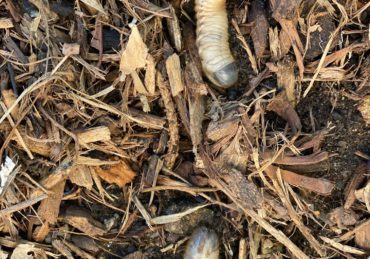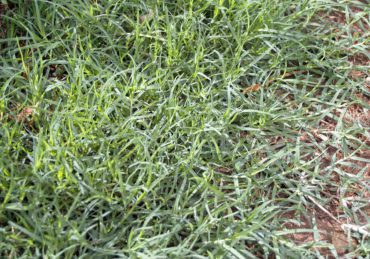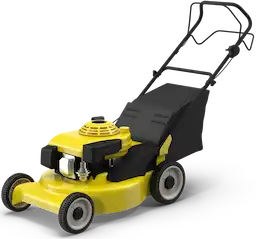Finding the perfect grass seed for shade can feel like uncovering a hidden treasure chest in your backyard. You need to evaluate shade-tolerant varieties that thrive where sunlight is scarce. Imagine a lush green carpet that resists weeds and diseases even in low-light conditions. Curious about how to achieve this? There’s a strategy to picking the right seed mix that could transform your shaded areas into vibrant, healthy lawns.
Why Shade Requires a Different Grass Strategy
When dealing with shaded areas, you need to understand how limited sunlight affects grass growth.
Grass in shade often struggles with reduced photosynthesis, leading to weaker and thinner lawns.
To overcome these challenges, it’s essential to choose the right shade-tolerant grass varieties and adjust your lawn care practices accordingly.
How Shade Affects Grass Growth
Although shade can create a tranquil garden setting, it poses challenges for growing grass, as reduced sunlight limits photosynthesis, essential for robust turf.
You’ll find that different grass types, like fine fescue and tall fescue, adapt well to low-light conditions. They thrive in dappled or full shade by maintaining moisture and resisting diseases.
Selecting the right shade-tolerant grass guarantees a healthy, lush lawn.
Easily hire the best lawn & landscape pros working in your neighborhood.
Common Shade Challenges in Lawns
Understanding how shade affects grass growth sets the stage for addressing specific challenges that shaded lawns face.
Common shade challenges include reduced growth rates, thinner turf, and increased susceptibility to fungal diseases. Weeds thrive by outcompeting your shade-tolerant grass seed for resources.
Establishing lawns in shaded areas demands selecting the right grass species and maintaining proper mowing heights. Regular monitoring helps manage these obstacles for a healthier lawn.
Meet the Grass Types That Love the Shade
When you’re choosing grass for shaded areas, you’ll want to take into account varieties that thrive with less sunlight.
Fine fescue is a top choice due to its high shade tolerance, while perennial ryegrass quickly establishes itself, making it a great component in a mixed lawn.
Furthermore, tall fescue, Kentucky bluegrass, and rough bluegrass offer unique shade adaptations, and if you’re in a warmer climate, St. Augustine and Zoysia can provide excellent coverage.
Fine Fescue – The Shaded Lawn Champion
Fine fescue is your best ally when it comes to maintaining a lush lawn in shady areas. Its exceptional shade tolerance, fine texture, and deep root systems make it ideal for low-light conditions. You’ll appreciate less mowing with its slower growth rate. Here’s a quick breakdown:
| Feature | Benefit |
|---|---|
| Shade Tolerance | Thrives in low-light |
| Deep Roots | Access to moisture |
| Slow Growth | Reduced maintenance |
Perennial Ryegrass – Quick Germination, Great Mix-in
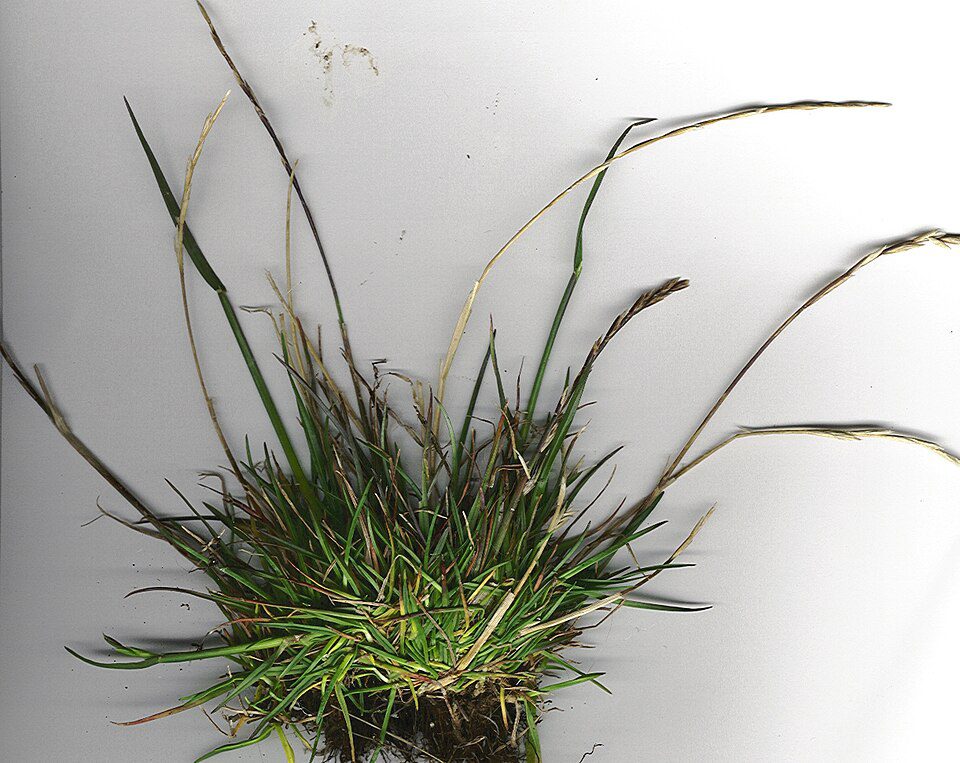
Although it may not be the first grass type you think of for shaded areas, perennial ryegrass offers a quick fix for establishing a lush lawn.
Its rapid germination, sprouting within 5 to 10 days, makes it ideal for filling bare spots.
While moderately shade-tolerant, combining it with other shade-tolerant species enhances your lawn’s resilience.
Its fine texture and rich green color maintain appeal even in partial shade.
Tall Fescue – Durable and Drought Tolerant
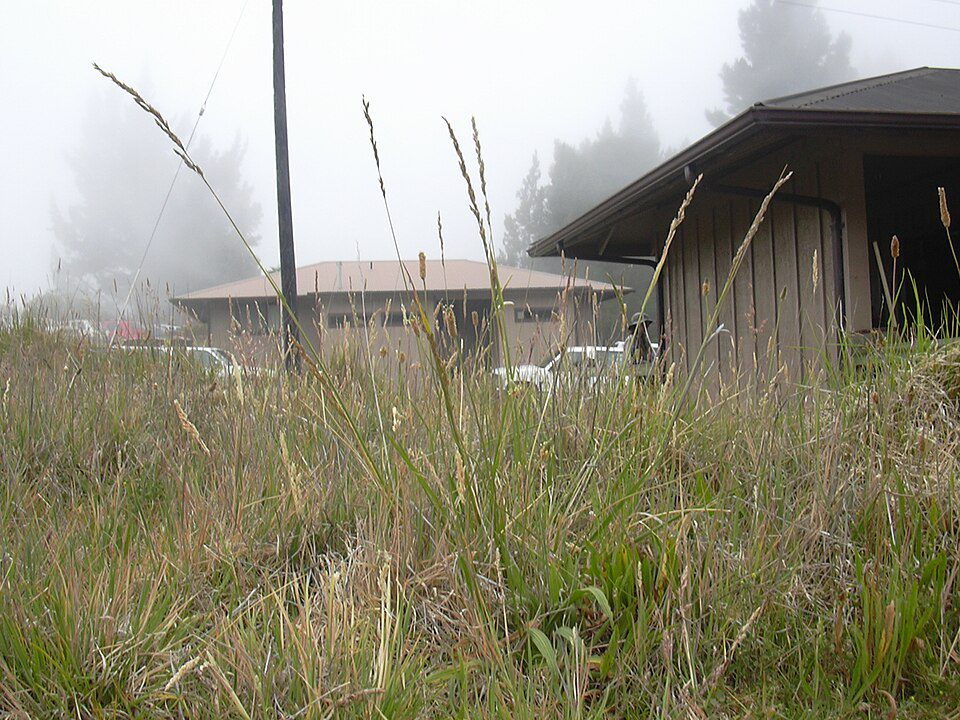
If you’re looking for a grass type that can withstand both shade and drought, tall fescue is an excellent choice.
Its deep root system guarantees durability and moisture retention, making it shade tolerant.
Imagine it thriving with:
- 3-5 hours of sunlight daily.
- Coarse texture providing a lush look.
- Adaptability to various soils and heat.
Tall fescue is low maintenance and resilient.
Easily hire the best lawn & landscape pros working in your neighborhood.
Kentucky Bluegrass & Rough Bluegrass – Selective Shade Success
While Kentucky Bluegrass isn’t typically known for its shade tolerance, certain varieties can thrive in shifting zones given 3-5 hours of sunlight each day. Rough Bluegrass, on the other hand, excels in moist, shaded environments. Both benefit from well-prepared soil and regular maintenance. Mixing these with fine fescues improves shade resilience.
| Grass Type | Key Feature |
|---|---|
| Kentucky Bluegrass | Thrives with sunlight |
| Rough Bluegrass | Excels in moist shade |
Warm Season Options – St. Augustine & Zoysia for Southern Lawns
Even in the sun-drenched South, some lawns need grass that thrives in the shade.
Consider these warm-season options:
- St. Augustinegrass: Tolerates moderate shade, needing 4-6 hours of sunlight. It flourishes in partial shade.
- Zoysiagrass: Offers dense growth and drought resistance, suitable for low-light but may thin in deep shade.
Both varieties require less maintenance, but watch for fungal issues in humid areas.
Choosing the Best Shade Grass Seed Mix for Your Yard
When choosing the best shade grass seed mix for your yard, start by evaluating the type of shade, light, moderate, or dense, that your lawn experiences.
For ideal results, consider whether a blend of seeds or a single variety suits your needs, as mixes often provide a balanced approach to varying light conditions.
Light vs Moderate vs Dense Shade
Choosing the right grass seed mix for your yard involves understanding the varying shade conditions it experiences.
For light shade, consider perennial ryegrass and tall fescue, which adapt well to 4-6 hours of sunlight.
In moderate shade, opt for:
- Creeping red fescue
- Mixes of fine fescues
For dense shade, use fine fescue blends, as they thrive with minimal light.
Mixes vs Single Seed Varieties
While selecting grass seed for shaded areas, opting for mixes over single seed varieties can greatly enhance your lawn’s adaptability and resilience.
A well-chosen mix of shade-tolerant grasses, like fine fescue and perennial ryegrass, adapts better to varying light conditions. These mixes improve overall lawn health by offering diverse root structures and growth rates, which help combat weeds and reduce disease susceptibility in shaded environments.
Soil Prep for Shaded Lawns
To prepare your shaded lawn for shade-tolerant grass, start by focusing on proper aeration and drainage.
Aerate the soil to at least six inches deep to encourage root growth and improve water absorption.
Ensuring good drainage will prevent waterlogging, which is essential since shaded areas can retain more moisture.
Aeration and Drainage in Low-Light Areas

When preparing soil for shaded lawns, it’s essential to focus on aeration and drainage to guarantee healthy grass growth.
Consider these steps:
- Aerate deeply: Reach at least six inches to boost root growth and enhance drainage.
- Add compost: Mix in organic materials to improve nutrient capacity.
- Ensure proper drainage: Prevent fungal diseases by maintaining soil structure for adequate water movement.
These practices help your shaded lawn thrive.
Easily hire the best lawn & landscape pros working in your neighborhood.
Planting and Growing Grass in Shady Conditions
When planting grass in shady conditions, timing is key, so aim for early fall or spring when the soil is warm and moist.
Use sowing techniques that guarantee even distribution in areas with limited light, such as broadcasting seeds by hand or with a spreader.
Don’t forget to mulch lightly to retain moisture and support early growth, giving your grass the best start possible.
Timing Your Planting
Planting grass in shady areas requires careful timing to guarantee successful growth. When timing your planting, consider these key points:
- Cool-Season Grasses: Plant in early fall when soil temperatures favor germination.
- Warm-Season Grasses: Opt for late spring to early summer to establish before summer heat.
- Soil Preparation: Complete aeration and add organic matter to enhance seed-to-soil contact for your grass seed for shade.
Sowing Techniques for Thin-Light Areas
After timing your planting perfectly, it’s time to focus on effective sowing techniques for thin-light areas, ensuring your grass thrives in shaded conditions.
Start by aerating the soil to a depth of six inches, then mix in organic matter to improve soil type.
Choose shade lawn seed blends like creeping red fescue. Sow during the ideal season, watering deeply yet infrequently to encourage strong root establishment.
Mulching & Moisture – Support Early Growth
Although shaded areas can pose challenges for grass growth, using mulch effectively supports early development in these conditions.
Mulching helps by:
- Regulating soil temperature – providing a stable environment for germination.
- Suppressing weeds – reducing competition for moisture and nutrients.
- Improving soil structure – enhancing moisture retention over time.
Maintaining a Healthy Lawn in the Shade
To keep your shaded lawn thriving, focus on a few key maintenance strategies.
Mow at a higher height to maximize photosynthesis and help your grass outcompete weeds.
Practice smart watering by soaking deeply but less often, and consider overseeding or thinning trees to boost sunlight exposure.
Mowing Tips for Shaded Lawns
When maintaining a healthy lawn in the shade, mowing techniques play an essential role in promoting robust grass growth.
Here are some key mowing tips for shaded lawns:
- Height: Mow at 3 to 4 inches to maximize photosynthesis.
- Blade Care: Keep mower blades sharp to prevent grass tearing.
- Timing: Mow during dry conditions, early morning or late afternoon, to reduce stress.
Smart Watering Strategies
Maintaining a healthy lawn in the shade requires smart watering strategies to guarantee your grass thrives. Water deeply and infrequently, about 1 inch weekly, to promote deep roots in shaded areas. Use a moisture meter and adjust for rain or seasons. Water early to reduce evaporation.
| Watering Time | Frequency | Benefit |
|---|---|---|
| Early Morning | Weekly | Reduces evaporation |
| Early Morning | Weekly | Promotes deep roots |
| Early Morning | Weekly | Prevents fungal issues |
Overseeding and Thinning Trees
Although your lawn is shaded, you can still cultivate a vibrant green space by strategically overseeding and thinning trees. Here’s how:
- Thinning Trees: Trim branches to boost sunlight, helping grass get the essential 3-5 hours of light.
- Overseeding: Regularly overseed with shade-tolerant grass to fill bare spots and prevent weeds.
- Balanced Maintenance: Maintain soil pH and add organic matter to support growth.
Want a Lush Shaded Lawn Without the Guesswork? LawnGuru Can Help
Say goodbye to the hassle of figuring out the best grass seed for your shaded lawn by booking a service with LawnGuru today.
With no contracts and the flexibility to skip anytime, you can enjoy expert guidance tailored to your needs.
Let LawnGuru handle the guesswork, so you can focus on enjoying a lush, healthy lawn.

